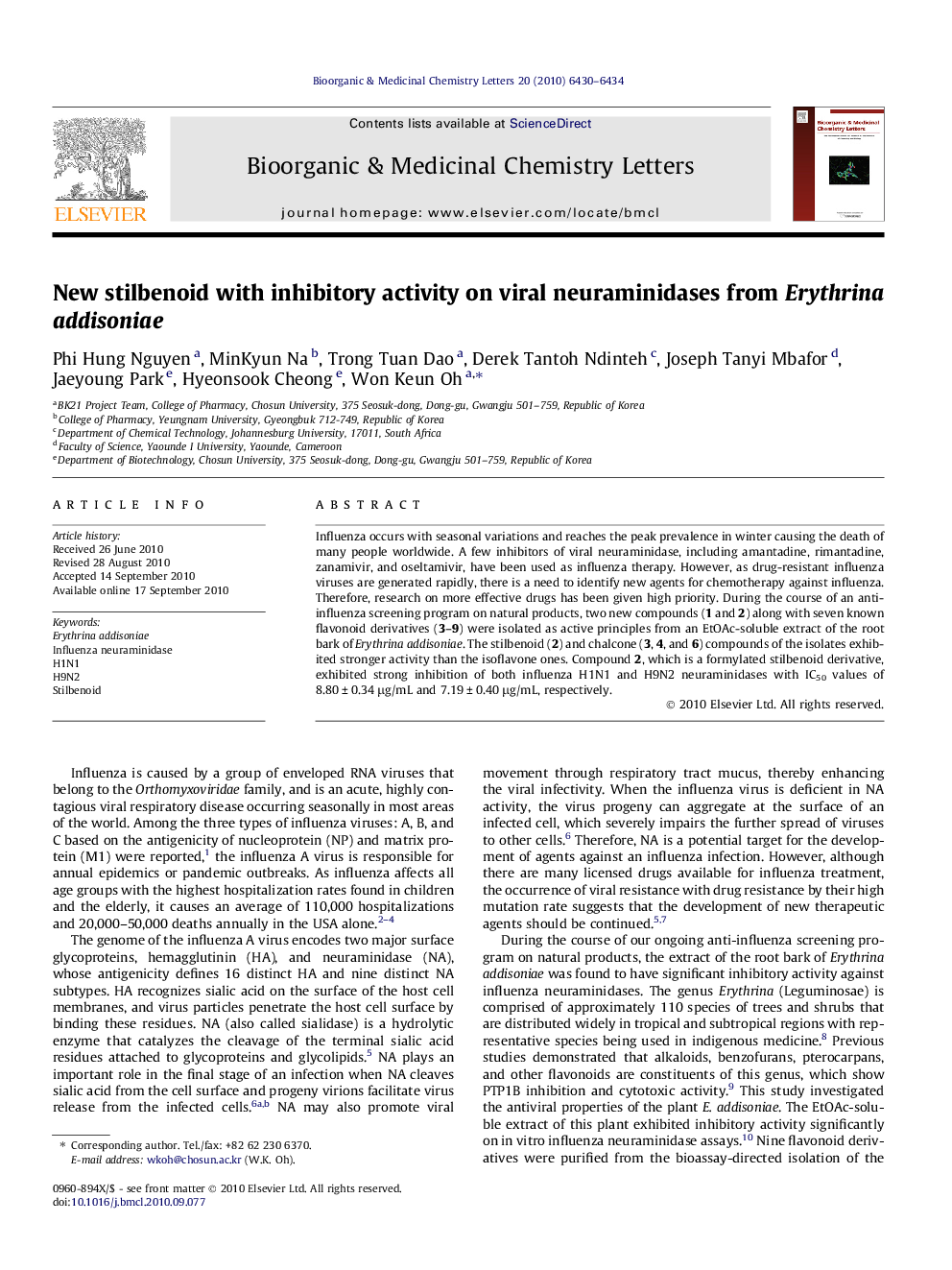| Article ID | Journal | Published Year | Pages | File Type |
|---|---|---|---|---|
| 1371578 | Bioorganic & Medicinal Chemistry Letters | 2010 | 5 Pages |
Influenza occurs with seasonal variations and reaches the peak prevalence in winter causing the death of many people worldwide. A few inhibitors of viral neuraminidase, including amantadine, rimantadine, zanamivir, and oseltamivir, have been used as influenza therapy. However, as drug-resistant influenza viruses are generated rapidly, there is a need to identify new agents for chemotherapy against influenza. Therefore, research on more effective drugs has been given high priority. During the course of an anti-influenza screening program on natural products, two new compounds (1 and 2) along with seven known flavonoid derivatives (3–9) were isolated as active principles from an EtOAc-soluble extract of the root bark of Erythrina addisoniae. The stilbenoid (2) and chalcone (3, 4, and 6) compounds of the isolates exhibited stronger activity than the isoflavone ones. Compound 2, which is a formylated stilbenoid derivative, exhibited strong inhibition of both influenza H1N1 and H9N2 neuraminidases with IC50 values of 8.80 ± 0.34 μg/mL and 7.19 ± 0.40 μg/mL, respectively.
Graphical abstractTwo new compounds (1 and 2) along with seven known flavonoid derivatives (3–9) were isolated as active principles from an EtOAc-soluble extract of the root bark of Erythrina addisoniae. All the isolated compounds (1–9) were tested for their inhibitory activities against both influenza neuraminidases from influenza H1N1 and H9N2. Compound 2, which is a formylated stilbenoid derivative, exhibited strong inhibition of both influenza H1N1 and H9N2 neuraminidases with IC50 values of 8.80 ± 0.34 μg/mL and 7.19 ± 0.40 μg/mL, respectively.Figure optionsDownload full-size imageDownload as PowerPoint slide
